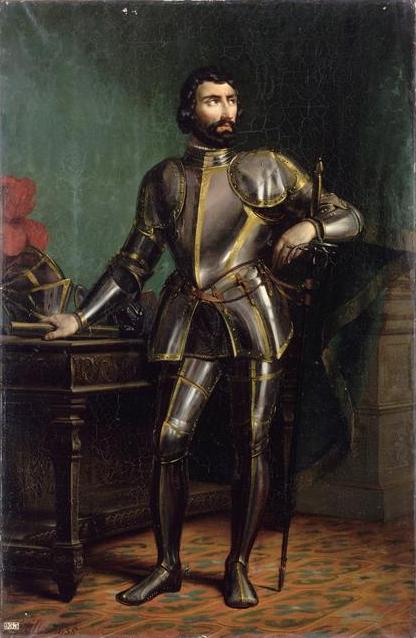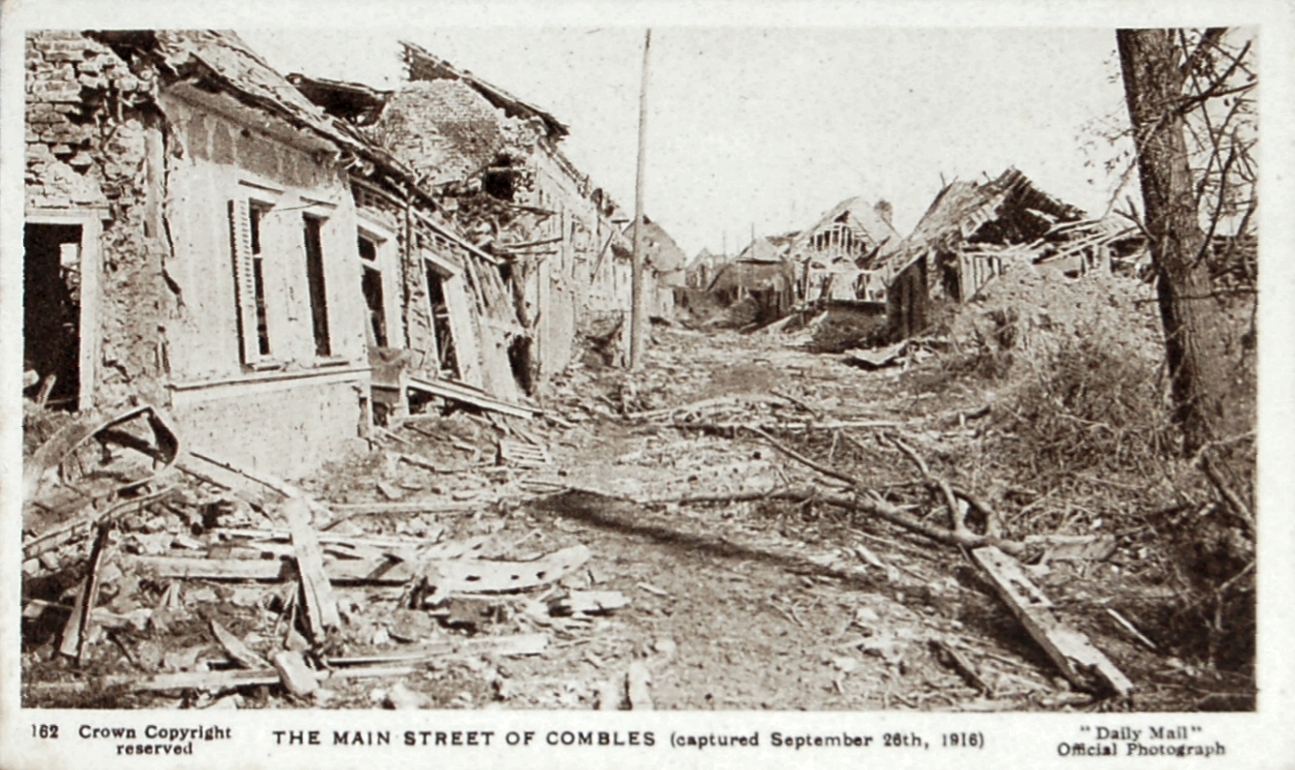|
Lord Of Carency
The lordship of Carency belonged to a cadet branch of the House of Bourbon. From the 15th century onwards they were known as princes of Carency, even if their fiefdom does not seem to have been promoted to a princedom. In the 16th century Carency passed to the Escars via the female line. Origins (13th and 14th centuries) * Catherine de Condé, lady of Carency, Buquoy and Aubigny. She married Jacques de Châtillon (†1302) Lord of Leuze, younger son of Guy de Châtillon (†1289), count of Saint-Pol, by whom she had : * Hugues de Châtillon (†1329), lord of de Condé, Carency, Buquoy, Aubigny and Leuze. He married Jeanne, Lady of Argies and lady of Cathen, by whom he had : * Jeanne de Châtillon (1320-†1371), Lady of Condé, Carency, Aubigny and Leuze. In 1335 she married James I, Count of La Marche (†1362), by whom she had : * John I (1344-†1393), Count of La Marche, Vendôme and Castres. House of Bourbon-Carency (14th–16th centuries) * John of B ... [...More Info...] [...Related Items...] OR: [Wikipedia] [Google] [Baidu] |
Carency
Carency () is a commune in the Pas-de-Calais department in the Hauts-de-France region of France. Geography A farming village located 8 miles (13 km) northwest of Arras on the D58 road. Carency is also the name of the brook which constitutes the course upstream of the Deûle river and which flows through the village. Population Places of interest * The church of St Aignan, rebuilt, along with most of the village, after the destruction of World War I. * Vestiges of a 13th-century castle. Notable people François Faber, winner of the 1909 Tour de France, died here fighting in the Second Battle of Artois, on 9 May 1915, during World War I World War I (28 July 1914 11 November 1918), often abbreviated as WWI, was one of the deadliest global conflicts in history. Belligerents included much of Europe, the Russian Empire, the United States, and the Ottoman Empire, with fightin .... See also * Communes of the Pas-de-Calais department References External links C ... [...More Info...] [...Related Items...] OR: [Wikipedia] [Google] [Baidu] |
Philip Of Artois, Count Of Eu
Philip of Artois (1358 – 16 June 1397, Micalizo), son of John of Artois, Count of Eu, and Isabeau of Melun, was Count of Eu from 1387 until his death, succeeding his brother Robert. Philip was a gallant and energetic soldier. In 1383, he captured the town of Bourbourg from the English. He went on a pilgrimage to the Holy Land, and was imprisoned there by Barquq, the Sultan of Egypt, being released through the mediation of Jean Boucicaut and the Venetians. In 1390, he joined the unsuccessful expedition of Louis II, Duke of Bourbon, against Mahdia. In 1393, Philip was created Constable of France. As a prominent Crusader, Philip was one of the French contingent sent to take part in the Battle of Nicopolis. He was captured in the battle, and subsequently died in captivity. Marriage On 27 January 1393, Philip married Marie (1367–1434), daughter of John, Duke of Berry. They had: * Philip (1393-23 December 1397), likely already dead by the time news arrived in France of ... [...More Info...] [...Related Items...] OR: [Wikipedia] [Google] [Baidu] |
Charles III, Duke Of Bourbon
Charles III, Duke of Bourbon (17 February 1490 – 6 May 1527) was a French military leader, the count of Montpensier, Clermont and Auvergne, and dauphin of Auvergne from 1501 to 1523, then duke of Bourbon and Auvergne, count of Clermont-en-Beauvaisis, Forez and La Marche, and lord of Beaujeu from 1505 to 1521. He was also the constable of France from 1515 to 1521. Also known as the Constable of Bourbon, he was the last of the great feudal lords to oppose the king of France. He commanded the troops of Holy Roman Emperor Charles V in what became known as the Sack of Rome in 1527, where he was killed. Family Charles was born at Montpensier, the second son of Count Gilbert of Montpensier by his wife Clara Gonzaga (1 July 1464 – 2 June 1503). Gilbert died in 1496, and his elder son, Louis II, died unwed in 1501, leaving Charles the heir to the family's titles and extensive lands in Auvergne. Marriage Charles married his agnatic second cousin, Suzanne, Duchess of Bourbon. ... [...More Info...] [...Related Items...] OR: [Wikipedia] [Google] [Baidu] |
Écaillon (Nord)
Écaillon () is a Communes of France, commune in the Nord (French department), Nord Departments of France, department in northern France. Heraldry See also *Communes of the Nord department References Communes of Nord (French department) {{Nord-geo-stub ... [...More Info...] [...Related Items...] OR: [Wikipedia] [Google] [Baidu] |
Robersart
Robersart () is a commune in the Nord department in northern France. Heraldry See also *Communes of the Nord department The following is a list of the 648 communes of the Nord department of the French Republic. The communes cooperate in the following intercommunalities (as of 2020):Communes of Nord (French department) {{Nord-geo-stub ... [...More Info...] [...Related Items...] OR: [Wikipedia] [Google] [Baidu] |
Cambrésis
Cambrésis () is a former ''pagus'', county and prince-bishopric of the medieval Holy Roman Empire that was annexed to the Kingdom of France in 1679. It is now regarded as one of the "natural regions" of France, and roughly equivalent to the Arrondissement of Cambrai in department Nord. The capital of Cambrésis was Cambrai. Originally ruled by a dynasty of counts, Cambrésis became a prince-bishopric in 1007, comparable to the Prince-Bishopric of Liège and the Prince-Bishopric of Utrecht. It encompassed the territory in which the bishop of Cambrai had secular authority. History Romans and Franks ''Cameracum'' became important during the Roman Empire in the 3rd and 4th century due to its textile industry, taking over as administrative capital of the ''civitas Nerviorum'' from ''Bagacum Nerviorum'' (modern Bavay) around 400. As a Roman cultural capital it maintained its importance as the seat of a bishop (which it became before 400), whose jurisdiction stretched to medieval ... [...More Info...] [...Related Items...] OR: [Wikipedia] [Google] [Baidu] |
Fiefdom
A fief (; la, feudum) was a central element in medieval contracts based on feudal law. It consisted of a form of property holding or other rights granted by an overlord to a vassal, who held it in fealty or "in fee" in return for a form of feudal allegiance, services and/or payments. The fees were often lands, land revenue or revenue-producing real property like a watermill, held in feudal land tenure: these are typically known as fiefs or fiefdoms. However, not only land but anything of value could be held in fee, including governmental office, rights of exploitation such as hunting, fishing or felling trees, monopolies in trade, money rents and tax farms. There never did exist one feudal system, nor did there exist one type of fief. Over the ages, depending on the region, there was a broad variety of customs using the same basic legal principles in many variations. Terminology In ancient Rome, a " benefice" (from the Latin noun , meaning "benefit") was a gift of land ... [...More Info...] [...Related Items...] OR: [Wikipedia] [Google] [Baidu] |
Combles
Combles () is a commune in the Somme department in Hauts-de-France in northern France. Geography Combles is situated on the D20 road, some north-east of Amiens. History Combles was the operations centre for the battle of Bapaume during the Franco-Prussian War of 1870–71. Combles was again at the centre of much fighting during World War I (1914–1918), with many of its buildings damaged and many of its residents injured or killed, not to mention the numerous casualties among the forces in combat there. Many British soldiers who fell in the war are buried in the local cemetery, and there are numerous war cemeteries in the immediate surrounding area. It has, however, been substantially developed since the war's end. Population See also *Communes of the Somme department The following is a list of the 772 communes of the Somme department of France. The communes cooperate in the following intercommunalities (as of 2020): [...More Info...] [...Related Items...] OR: [Wikipedia] [Google] [Baidu] |
Duisans
Duisans () is a commune in the Pas-de-Calais department in the Hauts-de-France region of France France (), officially the French Republic ( ), is a country primarily located in Western Europe. It also comprises of overseas regions and territories in the Americas and the Atlantic, Pacific and Indian Oceans. Its metropolitan area .... Geography A farming village northwest of Arras at the junction of the D55 and D56 roads. The small river Gy, a tributary of the Scarpe river, flows through the village. Population Places of interest * The church of St. Leger, dating from the fifteenth century. * The eighteenth-century chateau, built by Antoine-Guillaume Dubois de Hanovre. * Two 17th-century chapels. * A war cemetery with c.2,500 graves outside the village See also * Communes of the Pas-de-Calais department References External links Website of the château de Duisans Communes of Pas-de-Calais {{Arras-geo-stub ... [...More Info...] [...Related Items...] OR: [Wikipedia] [Google] [Baidu] |

-nl.png)

